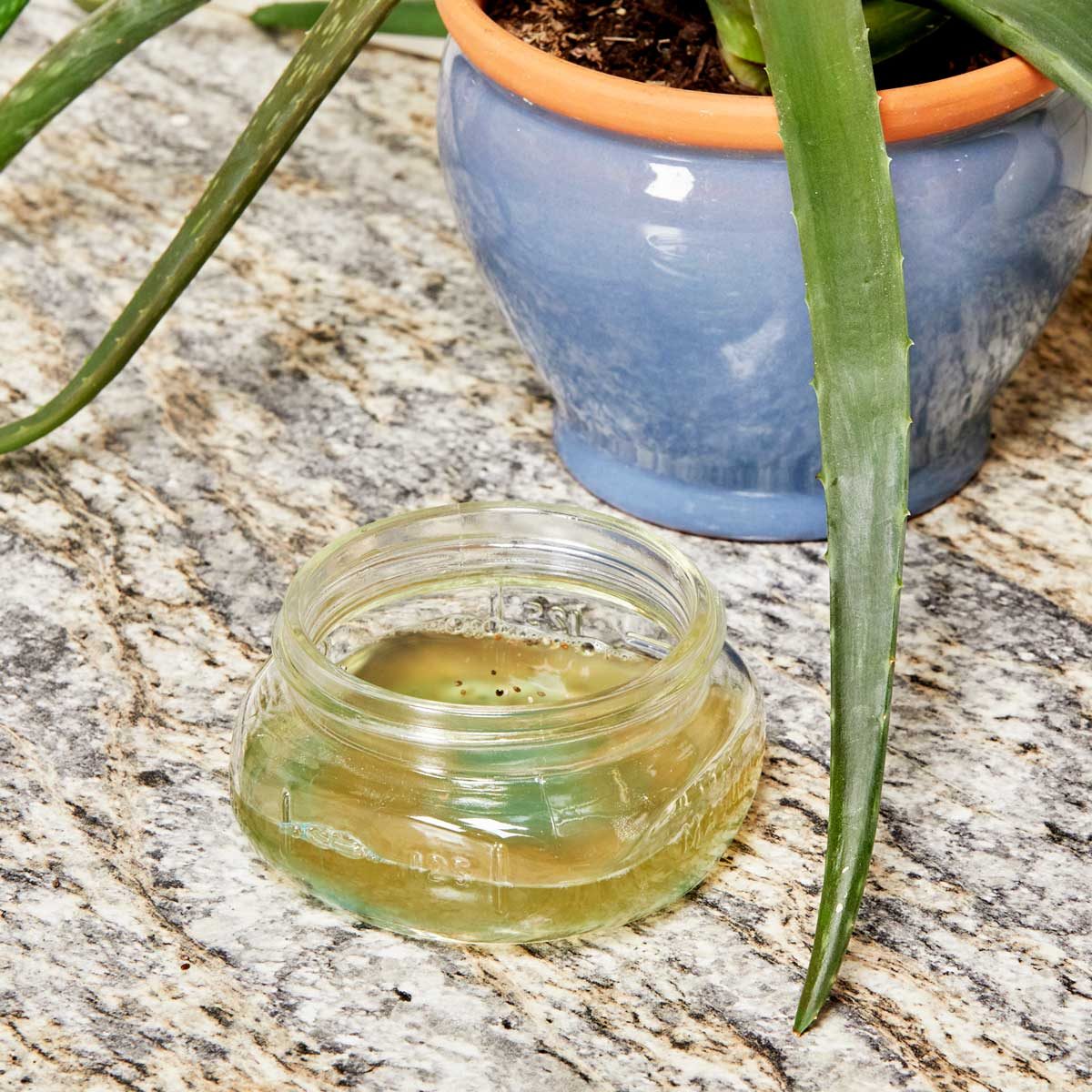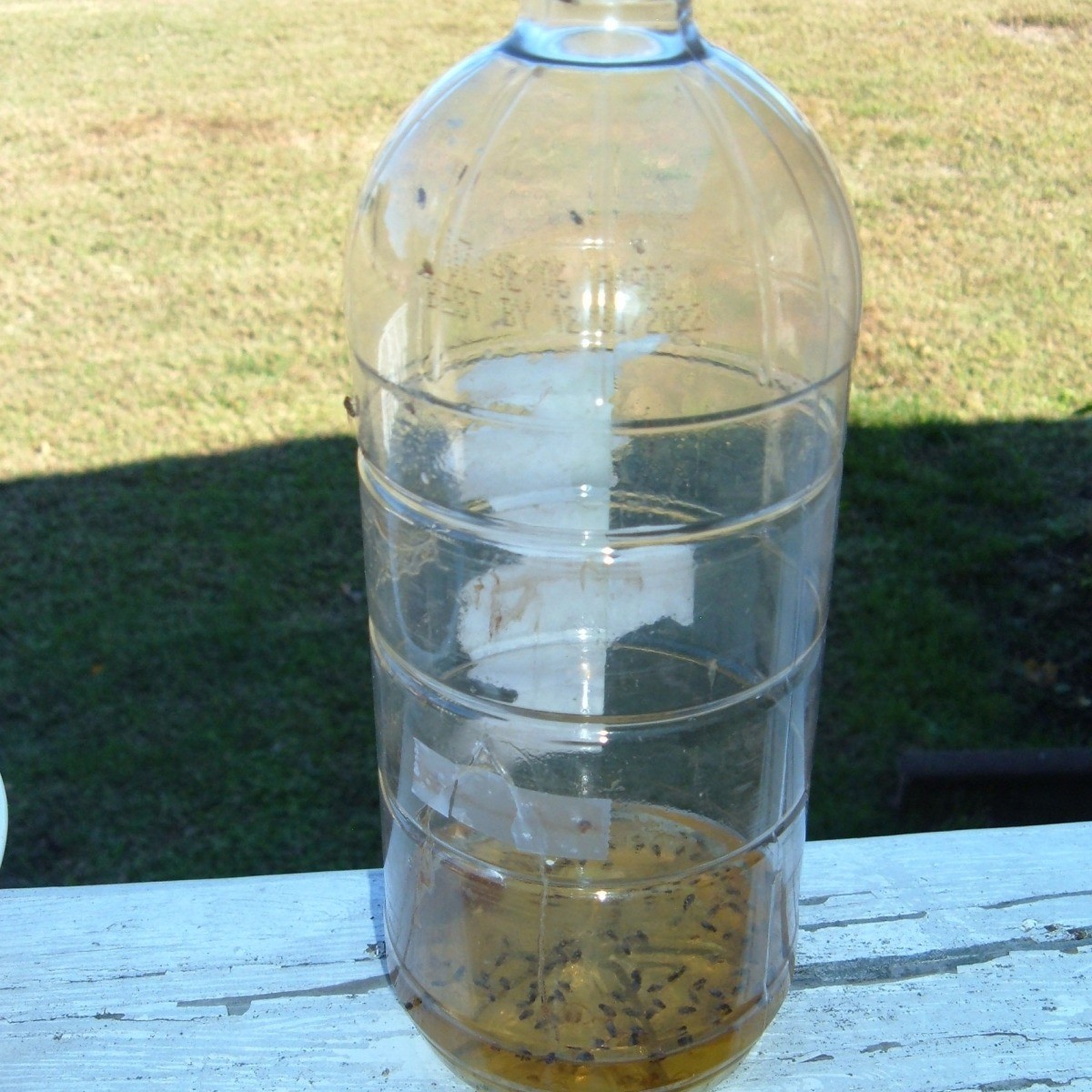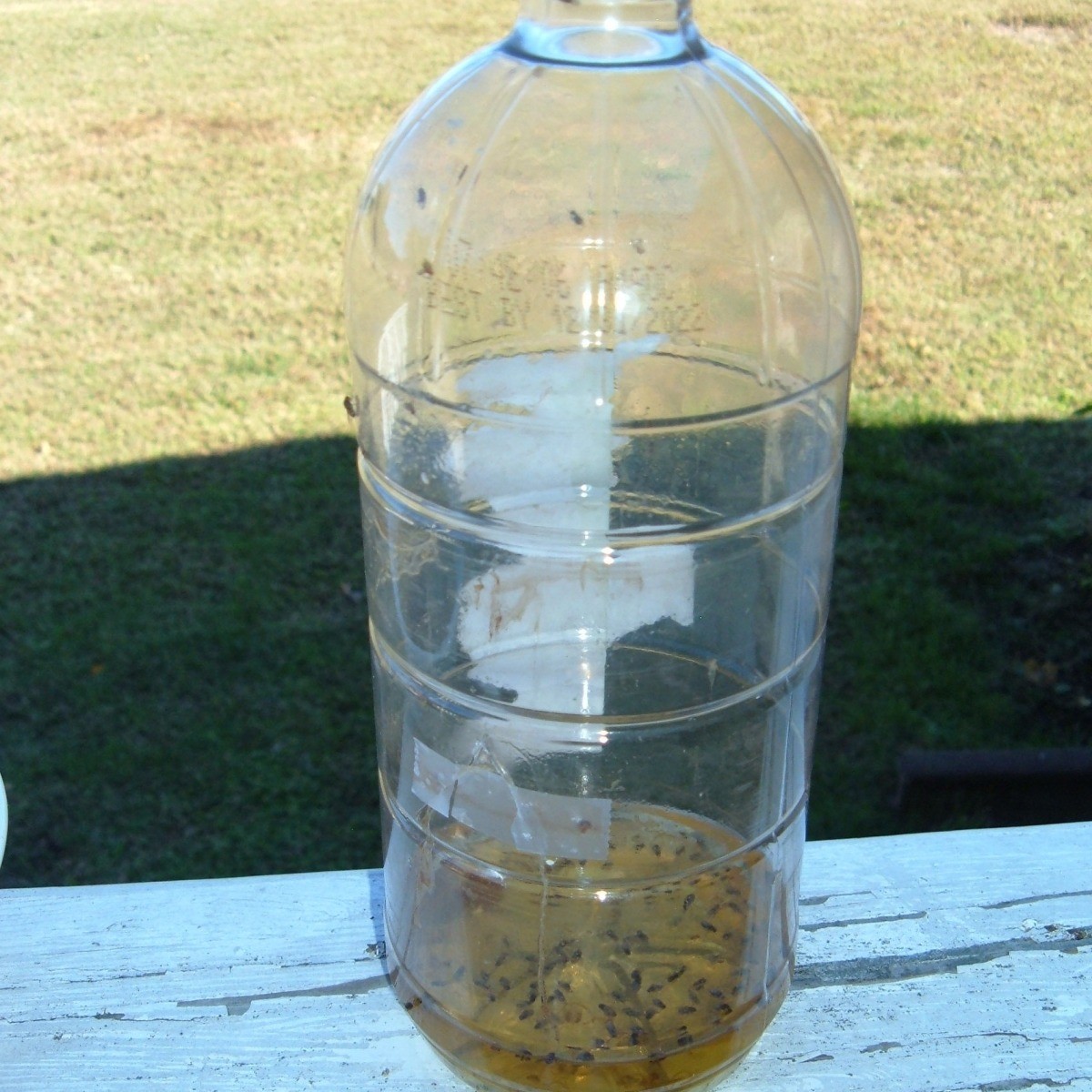The Best DIY Traps to Control Gnats in Plants – Tiny, pesky gnats can quickly turn your beloved houseplants into a frustrating nuisance. These flying insects are attracted to the moisture and decaying matter often found in potting soil, leading to swarms that can be difficult to control.
But fear not, there are effective and affordable DIY solutions that can help you reclaim your plants from these annoying invaders.
This guide will equip you with a range of DIY trap methods, natural remedies, and preventative measures to combat gnat infestations. From simple sticky traps to homemade concoctions, you’ll discover effective techniques to deter these pesky insects and keep your plants thriving.
Understanding Gnats and Their Attraction to Plants
Gnats are tiny, flying insects that can be a nuisance to both indoor and outdoor plant owners. While they may seem harmless, they can quickly multiply and damage plants, leading to wilting, yellowing, and even death. To effectively control gnat infestations, it’s crucial to understand their life cycle, preferred environments, and what attracts them to plants.
Gnat Life Cycle and Preferred Environments
Gnats undergo a complete metamorphosis, meaning they transform through four distinct stages: egg, larva, pupa, and adult.
- Eggs:Gnats lay their eggs in moist soil or decaying organic matter, often near the base of plants. The eggs are tiny and white, and they hatch within a few days.
- Larvae:Gnat larvae, also known as “fungus gnats,” are small, white, worm-like creatures that feed on decaying organic matter, algae, and fungi. They can be found in the soil, around plant roots, and in drainage trays.
- Pupae:After a few weeks, the larvae transform into pupae, which are small, brown, and oval-shaped. The pupae remain dormant for a few days before emerging as adults.
- Adults:Adult gnats are the winged stage of the life cycle. They are attracted to moisture, decaying matter, and plants, where they lay their eggs, continuing the cycle.
Gnats thrive in warm, humid environments, making them particularly common in greenhouses, indoor gardens, and areas with high humidity. They prefer moist soil, decaying organic matter, and stagnant water, which provide them with food and breeding grounds.
Common Types of Gnats that Infest Plants
There are several types of gnats that commonly infest plants, including:
- Fungus gnats:These are the most common type of gnat found in homes and gardens. They are small, dark-colored, and have long legs. Fungus gnats are attracted to moist soil and decaying organic matter, and they can damage plant roots by feeding on them.
- Shore flies:Also known as “drain flies,” these gnats are small, dark-colored, and have hairy bodies. They are attracted to damp areas, such as drains, sinks, and shower stalls, and they can often be found in bathrooms and kitchens.
- Fruit flies:These gnats are small, yellow-brown, and have red eyes. They are attracted to ripe fruit and fermenting liquids, and they can be a nuisance in kitchens and pantries.
Factors Attracting Gnats to Plants, The Best DIY Traps to Control Gnats in Plants
Several factors can attract gnats to plants, including:
- Moisture:Gnats are attracted to moist environments, so overwatering plants can create an ideal breeding ground for them. Overwatering leads to waterlogged soil, which creates a perfect habitat for gnat larvae to thrive.
- Decaying matter:Gnats feed on decaying organic matter, such as dead leaves, roots, and insects. If there is decaying matter in the soil, it will attract gnats.
- Specific plant species:Some plant species are more susceptible to gnat infestations than others. For example, plants with soft, fleshy leaves, such as ferns and African violets, are often targeted by gnats.
DIY Trap Methods for Controlling Gnats
Gnats can be a nuisance in your home, especially around your plants. They can damage your plants, spread diseases, and be annoying to deal with. Luckily, there are several DIY trap methods that can help you control gnat populations without resorting to harmful chemicals.
While DIY traps like apple cider vinegar or a soapy water mixture can be effective, sometimes you need a more targeted approach. For those pesky gnats that seem to be everywhere, How to Use Sticky Traps to Catch Gnats in Plants can be a great option.
These traps are easy to use and can quickly eliminate a large number of gnats, making them a valuable tool in any plant owner’s arsenal.
DIY Trap Methods for Controlling Gnats
There are several DIY trap methods that can help you control gnat populations in your home. These methods are inexpensive, easy to implement, and can be effective in reducing gnat numbers.
Sticky Traps
Sticky traps are a simple and effective way to catch gnats. They work by trapping the gnats on a sticky surface. You can purchase sticky traps at most garden centers or online. You can also make your own sticky traps by coating a piece of cardboard or paper with petroleum jelly or a similar sticky substance.
To maximize the effectiveness of sticky traps, place them near areas where gnats are most active, such as near your plants or windows. You should also replace sticky traps regularly, as they can become less effective as they become covered in gnats.
Vinegar Traps
Vinegar traps are another effective way to catch gnats. Vinegar attracts gnats, and the trap design prevents them from escaping. To make a vinegar trap, you will need a jar or container, apple cider vinegar, dish soap, and a piece of paper or cardboard.
Pour about an inch of apple cider vinegar into the jar or container. Add a few drops of dish soap to the vinegar. The dish soap will help to break the surface tension of the vinegar, making it easier for the gnats to fall into the trap. Cut a piece of paper or cardboard into a circle that is slightly smaller than the opening of the jar or container. Place the paper or cardboard over the opening of the jar or container, but don’t seal it completely. The gnats will be attracted to the vinegar and fly into the trap, but they won’t be able to escape.
Soap Traps
Soap traps are another simple and effective way to control gnats. Soap traps work by disrupting the surface tension of water, causing the gnats to drown. To make a soap trap, you will need a shallow dish, water, and dish soap.
While DIY traps are effective in controlling gnats, remember that overwatering is often the culprit behind their appearance. To ensure your hanging plants thrive, consider using a fertilizer specifically formulated for their needs, such as those found in our guide on Best Fertilizers for Hanging Plants.
By maintaining a healthy watering routine and providing the right nutrients, you can create an environment less hospitable to gnats and keep your plants flourishing.
Fill the dish with water. Add a few drops of dish soap to the water. The dish soap will break the surface tension of the water, making it easier for the gnats to drown. Place the dish near areas where gnats are most active, such as near your plants or windows.
Yellow Sticky Traps
Yellow sticky traps are a popular choice for controlling gnats. Gnats are attracted to the yellow color, and they get stuck on the sticky surface. You can purchase yellow sticky traps at most garden centers or online.
To maximize the effectiveness of yellow sticky traps, place them near areas where gnats are most active, such as near your plants or windows. You should also replace yellow sticky traps regularly, as they can become less effective as they become covered in gnats.
Comparison of DIY Trap Methods
| Trap Method | Effectiveness | Cost | Ease of Implementation ||—|—|—|—|| Sticky Traps | Highly Effective | Low | Easy || Vinegar Traps | Very Effective | Low | Easy || Soap Traps | Moderately Effective | Low | Easy || Yellow Sticky Traps | Highly Effective | Low | Easy |
Natural Remedies for Gnat Control: The Best DIY Traps To Control Gnats In Plants

While DIY traps are effective, natural remedies offer a more eco-friendly approach to gnat control. These methods leverage natural repellents and beneficial insects to discourage gnats and prevent infestations.
Essential Oils for Gnat Repellency
Certain essential oils possess properties that repel gnats. The strong scents of peppermint and cinnamon oil, for instance, are known to deter these pesky insects.
- Peppermint oil: Its sharp, minty aroma is disliked by gnats. Diffusing peppermint oil in the vicinity of plants can help create a repellent barrier.
- Cinnamon oil: The warm, spicy scent of cinnamon oil also acts as a natural gnat repellent. Adding a few drops to a spray bottle filled with water can create a homemade gnat repellent spray.
Natural Gnat Repellent Sprays
Creating your own natural gnat repellent sprays is a simple and effective way to deter these insects. Common household ingredients can be combined to create solutions that are both safe and effective.
- Garlic spray: Garlic’s pungent odor is a natural deterrent for gnats. Blend a few cloves of garlic with water and spray the solution around plants.
- Citrus spray: Citrus fruits like lemons and oranges contain oils that repel gnats. Combine citrus peels with water and let it steep for a few days. Strain the mixture and spray it around plants.
- Vinegar spray: Vinegar’s acidic nature is unpleasant for gnats. Dilute white vinegar with water and spray it around plants. This can also help to control fungus gnats, which are attracted to damp soil.
Beneficial Insects for Gnat Control
Introducing beneficial insects like ladybugs and lacewings to your garden can help control gnat populations naturally. These insects are natural predators of gnats and other pests, and they can effectively reduce gnat infestations.
- Ladybugs: These colorful beetles are voracious eaters of aphids, which are a common food source for fungus gnats. Introducing ladybugs to your garden can help control both aphids and gnats.
- Lacewings: Lacewings are known for their appetite for gnats and other small insects. They can be purchased online or at garden centers and released into your garden to help control gnat populations.
Preventing Gnat Infestations

Proactive measures are crucial to preventing gnat infestations in your plants. By addressing the conditions that attract these pests, you can significantly reduce the chances of encountering them. Understanding the factors that contribute to gnat infestations and implementing preventive strategies can help you keep your plants healthy and gnat-free.
Watering Practices
Proper watering practices are paramount in preventing gnat infestations. Gnats thrive in moist environments, so overwatering can create ideal breeding grounds. Here’s how to adjust your watering routine:
- Allow the Top Inch of Soil to Dry:Before watering, check the top inch of soil. If it feels dry to the touch, it’s time to water. This ensures that the soil is not constantly wet, which discourages gnat activity.
- Water Thoroughly:When watering, ensure that the entire root system is adequately moistened. However, avoid soaking the soil, as this can lead to waterlogging and encourage gnat growth.
- Use a Watering Can with a Fine Rose:A fine rose on your watering can allows for gentle and even distribution of water, minimizing the risk of overwatering and creating puddles that attract gnats.
- Avoid Bottom Watering:Bottom watering involves placing the plant pot in a tray of water, allowing the plant to absorb moisture from the bottom. While this method can be effective, it can also lead to excessive moisture in the soil, which is a breeding ground for gnats.
Removing Decaying Matter
Decaying matter, such as dead leaves, stems, and roots, can attract gnats and provide a breeding ground for them. Regular removal of such debris is essential for gnat prevention:
- Clean Plant Pots and Trays:Regularly clean plant pots and trays with a mild soap solution to remove any accumulated debris or organic matter. This prevents the buildup of decaying material that attracts gnats.
- Remove Dead Plant Material:Regularly inspect your plants for dead leaves, stems, or roots. Promptly remove any decaying material to eliminate potential breeding sites for gnats.
- Clean Surrounding Areas:Keep the area around your plants clean and free of debris. This includes removing fallen leaves, grass clippings, or other organic matter that could attract gnats.
Choosing Gnat-Resistant Plant Species
Certain plant species are naturally less susceptible to gnat infestations. Selecting these plants can help minimize the risk of encountering gnats:
- Succulents:Succulents are known for their ability to retain moisture, making them less attractive to gnats. Their thick leaves and fleshy stems require less frequent watering, further reducing the risk of overwatering.
- Cacti:Similar to succulents, cacti are drought-tolerant and require minimal watering, making them less susceptible to gnat infestations.
- Herbs:Many herbs, such as rosemary, thyme, and lavender, have strong scents that can deter gnats. These plants also tend to be less susceptible to overwatering.
Final Review
By understanding the life cycle and preferences of gnats, and implementing the DIY traps and natural remedies Artikeld in this guide, you can effectively manage gnat infestations in your home. Remember to practice preventative measures, such as proper watering techniques and removing decaying matter, to minimize the risk of future infestations.
With a little effort, you can enjoy the beauty of your plants without the annoyance of pesky gnats.
FAQ Resource
Are DIY traps effective for controlling gnats?
Yes, DIY traps can be very effective for controlling gnat populations, especially when used in conjunction with other methods like preventative measures.
How long do DIY traps last?
The lifespan of DIY traps varies depending on the method used. Sticky traps can last for several weeks, while vinegar traps may need to be refreshed every few days.
Can I use store-bought pesticides to control gnats?
While store-bought pesticides can be effective, they may also harm beneficial insects and potentially contaminate your plants. It’s best to explore DIY and natural methods first.
What if my gnat infestation is severe?
If you’re dealing with a severe gnat infestation that doesn’t respond to DIY methods, it’s advisable to contact a professional pest control service.
